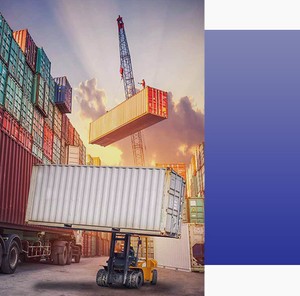Air Freight Vs. Ground Freight Shipping in Canada
When it comes to cutting shipping cost, to fly or not to fly? That is the question.
In 2018, there were 600 air freight carriers with licenses and hundreds of ground freight companies in Canada. Clearly there are no shortage of shipping choices to transport your goods.
But because there are so many options, it can be confusing as a business owner to decide which method will be the most cost-effective while reliably meeting your company’s needs. There’s a lot more involved in choosing a carrier than simply looking at the price and weight of your goods. It’s definitely not a decision that can be made in one meeting.
Unfortunately, in many cases, shippers are shocked when they get surprise charges on their invoices.
There is no common standard to determine how companies quote shipping costs because there are other factors to consider that add additional charges. Even though there is a freight class guide that all carriers use, the classification of the goods can also be based on interpretation.
This article will guide you on the most important questions to consider when choosing ground or air freight shipping. We’ll go over:
- Key industry terms
- The importance of choosing the right freight class
- Crucial factors to consider when deciding between air freight and ground freight shipping
- The pros and cons of ground and air freight
- Getting a freight quote
- Why you need to monitor your invoices
Key Terms in the Air Freight and Ground Freight Industry
There are important terms to understand before we dive into the different factors you should consider when choosing the right shipping method.
Less Than Truckload (LTL)
This shipping method is used to transport freight doesn’t require the use of a whole trailer. One of the most common trucking services.
Full Truckload (FTL)
This shipping method is used when you have enough goods to fill up a truck.(Read about: Full Truckload vs. Less than Truckload Services )
Freight carrier
A person or company that specializes in transporting freight or cargo from one location to another. Many carriers specialize in certain types of goods.
Freight broker
This person helps shippers find quality carriers who can handle transporting their products based on their requirements.
It can be very helpful to use a good freight broker who can guide you in determining the best carrier among their network for your goods and the right freight class. The broker can also help track the load to make sure the delivery has been completed.
Freight class
Everything that is shipped falls into one of 18 freight classes that are represented by numbers ranging from 50 to 500. LTL carriers will generally charge for freight based on weight and cube of the items being shipped.
The National Motor Freight Traffic Association publishes the National Motor Freight Classification® that is the standard for determining the freight class.
The importance of choosing the right freight shipping class
Not all freight is equal. Factors such as freight density, like heavy furniture for example, may max out the weight capacity before it maxes out the space capacity. Carriers assign a freight class based on density, stow-ability (store) and liability.
- Density
This is the key factor in determining the freight class in many cases. In some situations, stow-ability may take priority.
Density is the pounds per cubic foot of your item. Usually lower freight classes represent goods that have a higher density and lower cost. The higher the freight class, the higher the cost.
- Stow-ability
Simply put, how easy is it to store the item? Does it have unusual dimensions or hazardous?
If it’s harder to store and transport the item, the more it will cost to ship.
- Handling
This is the good’s ability to be handled as the freight is loaded and unloaded from one LTL terminal to another. Packaging and fragility are considered. The harder it is to handle a good, the higher the freight class will be and the more it will cost.
- Liability
This is the likelihood the item can be damaged, stolen or damaging to other freight property. The greater the liability risk, the higher the freight class and yes, you guess it, the cost.
It’s really important to choose the right freight class because it can really affect the final cost even if the weight and dimensions don’t change.
In one case, a shipper described the freight class as “chew toys for dogs.” But because the toys were made using deer antlers, what supposed to be a $300 shipment ended up costing $1,200 even though the weight and dimensions were the same!
Crucial Factors to Consider When Choose Air Freight shipping or Ground Freight shipping
There are a few key factors to think about before you decide if you want to send goods by air or ground. Both shipping methods have their advantages and disadvantages. Many businesses use a mix of air and ground depending on their customers and goods.
That’s why it’s important to look at all these following factors and track the numbers for your business.
Speed
How fast do your goods need to arrive?
While air freight is generally the fastest, it’s not always the case. Depending where the destination is, hazardous materials can slow down the freight process because of security checks, which can slow down the delivery. Sometimes it may be faster to ship by ground, especially for shorter distances.
Ground shipping is generally cheaper, but it is slower than air freight. It’s harder to guarantee precise arrival times unless you use FTL shipping where all your goods can fill up a truck.
LTL shipping makes more stops at different warehouses to complete orders for other shippers. If you’re using LTL shipping, build extra time in your schedule to allow for delays.
Cost
Ground freight is generally cheaper than air freight. But there can be exceptions. Carriers or freight brokers can tell you more details depending on your shipment.
LTL is the most economical shipping method because because you’re sharing the cost with other shippers using the same container. FTL is more expensive than LTL because the vehicle is contracted to just one shipper.
There are additional surcharges many shippers initially miss and these vary a lot between carriers. Sometimes you don’t know what charges will be made until you get your monthly invoice.
Reliability
Air freight is more reliable for quick shipping deadlines like products that have to be used right after they are produced.
Shippers should also consider the reliability of each method. Ground freight is subject to occasional delays, usually due to traffic, but these aren’t usually severe enough to change delivery dates.
Air freight experiences fewer delays. But when they do happen as a result of really bad weather conditions, which don’t often happen, they can be much harder to rectify. A bad storm or a blizzard could cause a delay.
Security
Shipping by air is generally a more secure way to get freight from point A to point B. Security at airports is tightly controlled in cargo and passenger areas. The high security protects air shipments against theft and damage in a way that ground transportation services by land cannot.
Ground shipping is less secure and hijackings can occur. Airplanes and airports are more tightly controlled than trucks and highways.
Shipment type and size
Air freight shipping is limited by weight.
Perishables with a tight expiration date are more likely to arrive fresh and quickly via air. Non-perishable items like furniture and appliances can be transported safely and effectively on the ground.
Goods that are appropriate for air shipping include medical supplies, documents, clothing and accessories. If you’re not sure if your item can be shipped by air freight, talk to local authorities. If it’s necessary, go through the inspection and clearance procedure beforehand.
Pros and Cons of Air and Ground Freight Shipping
Here is a summary of the advantages and disadvantages of air and ground freight shipping.
| Pros | Cons | |
| Air freight shipping |
|
|
| Ground freight shipping |
|
|
Related article: Flatbed Freight Shipping: The Best Way to Ship Tall and Wide Items
Getting a freight shipping quote
Getting an accurate freight quote depends on so many factors.
If you’re a new shipper, it may be better to work with a freight broker who can tap into their network of carriers to get the best rates for your business. They are experienced professionals who can save you money and time rather than trying to do all of the research yourself among the many carriers.
Freight brokers also play a key role in determining the most appropriate freight class. Remember how costly being in the wrong freight class can be on one shipment?
If you’re an experienced shipper, you can get quotes from different carriers to see who has the best rates for your type of shipment.
Once you’ve decided who to contact, it’s very important to give them as much detail as possible to avoid surprise costs later. Make sure you include everything they ask you including answers to these questions:
- What are you shipping?
- What is the size and weight of your packed freight?
- Are there any special handling requests?
- Where is your shipment going?
- How fast does it need to arrive?
- What is the value of your shipment?
Monitor your shipping invoices
Once you’ve started ground freight or air freight shipping, keep an eye on your shipping data because it affects your costs over time. You would be shocked by how much money high-volume shippers lose by not monitoring their freight bills and areas that could reduce costs over time.
While you could go really deep into the shipping data from many angles, the easiest place to start is checking your invoices regularly. They outline the final cost of your shipment and will show you what kind of surcharges you may pay because of mandatory minimums and other fees depending on the carrier.
Also look out for invalid charges or areas where you’re entitled for a refund if the carrier fails to deliver something. Unfortunately, you won’t necessarily know about all of the potential charges until you get your final invoice.
Having more data will also help you when you renegotiate your contracts with carriers so you continue to get competitive rates every year.
Conclusion: air shipping vs. group shipping
There are a lot of things for a business owner to consider when choosing whether they want to use air freight shipping, ground freight shipping or a mix of both.
If you’re a new shipper, you can benefit from using a good freight broker to leverage their experience, network of carriers and deals you couldn’t get on your own.
The most important factors to consider when choosing air freight or ground shipping are speed, cost, reliability, security, shipment type and shipment size.
It’s also crucial to choose the right freight class which is based on density, stow-ability (store) and liability. Choosing the wrong freight class can be a very expensive mistake.
Once you’ve analyzed all of these factors, get accurate quotes by providing all of the details carriers or freight brokers need including:
- What are you shipping?
- What is the size and weight of your packed freight?
- Are there any special handling requests?
- Where is your shipment going?
- How fast does it need to arrive?
- What is the value of your shipment?
Once you’ve considered all of the important factors and have all your shipment details, you will have a much better idea if air freight or ground freight shipping is better for your business.
As you work with more carriers, monitor your invoices to see if there are any surcharges or cases where you can get your money back to effectively manage your costs over time.
Sign up for industry alerts, insights & news from RoadLINX

